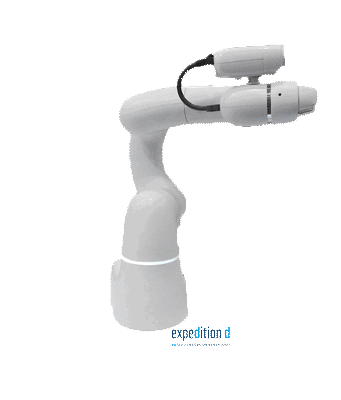
Labor Day: Made in America
Labor Day is rooted in manufacturing.
19th-century labor activists desired to draw attention to poor industrial labor conditions and the need for workers' rights. In particular, they sought to reduce work hours from seven 10-hour days to six 8-hour days. They succeeded.
Evolution of a Revolution
Things have changed dramatically since 1894, when Congress officially designated the first Monday in September to celebrate the American labor force.
Today the average weekly hours for manufacturing employees is 40.3. But that's not all that's changed.
Gone are the dreary assembly lines of production workers going through repetitive motions in poor conditions with minimal pay. Current manufacturing jobs require skill, education, and specialized training.
Let's look at a few of the ways industrial careers have evolved:
Training Wheels

BACK THEN: In the 19th and 20th centuries, requirements for factory workers were minimal; no training, experience, or education was necessary. Working conditions were miserable, wages were low, and injuries were common. Because the work was so labor-intensive, production teams were huge.
TODAY: Specialized skills and training are prerequisites for a career in today's industrial environment. There's a high demand for employees with both technical and critical-thinking skills.
Safety and efficiency are ensured through the latest training equipment and software.
Technologically Speaking

BACK THEN: After WWII, automation significantly increased productivity levels. With improved technology, much of the most tedious work was replaced with robotics, and factories had less need for a large labor force.
TODAY: Although machine automation has supplanted much of the once-necessary manual labor, technology has not replaced today's manufacturing workforce. Instead, manufacturers are now working with the new technology rather than against it. Workers utilize robotics and automation to help complete projects safely and more efficiently.
Coming Home
BACK THEN: Throughout the mid-90s and 2000s, many American manufacturers relocated to cheaper labor markets, primarily China and India, to save on production costs.

TODAY: But now, these manufacturers have started returning to U.S. soil. Inconsistent work, inferior product quality, and delayed shipping have all resulted in higher outsourcing costs than companies initially expected.
In addition, U.S. manufacturers want to reduce their reliance on global supply chains that proved vulnerable to disruption during the pandemic.
Interested?
Are you interested in pursuing a career in the manufacturing sector? Check out our available positions.
Sources: Featured Image: Pixabay Federal Reserve Economic Data Sivad Inc.

